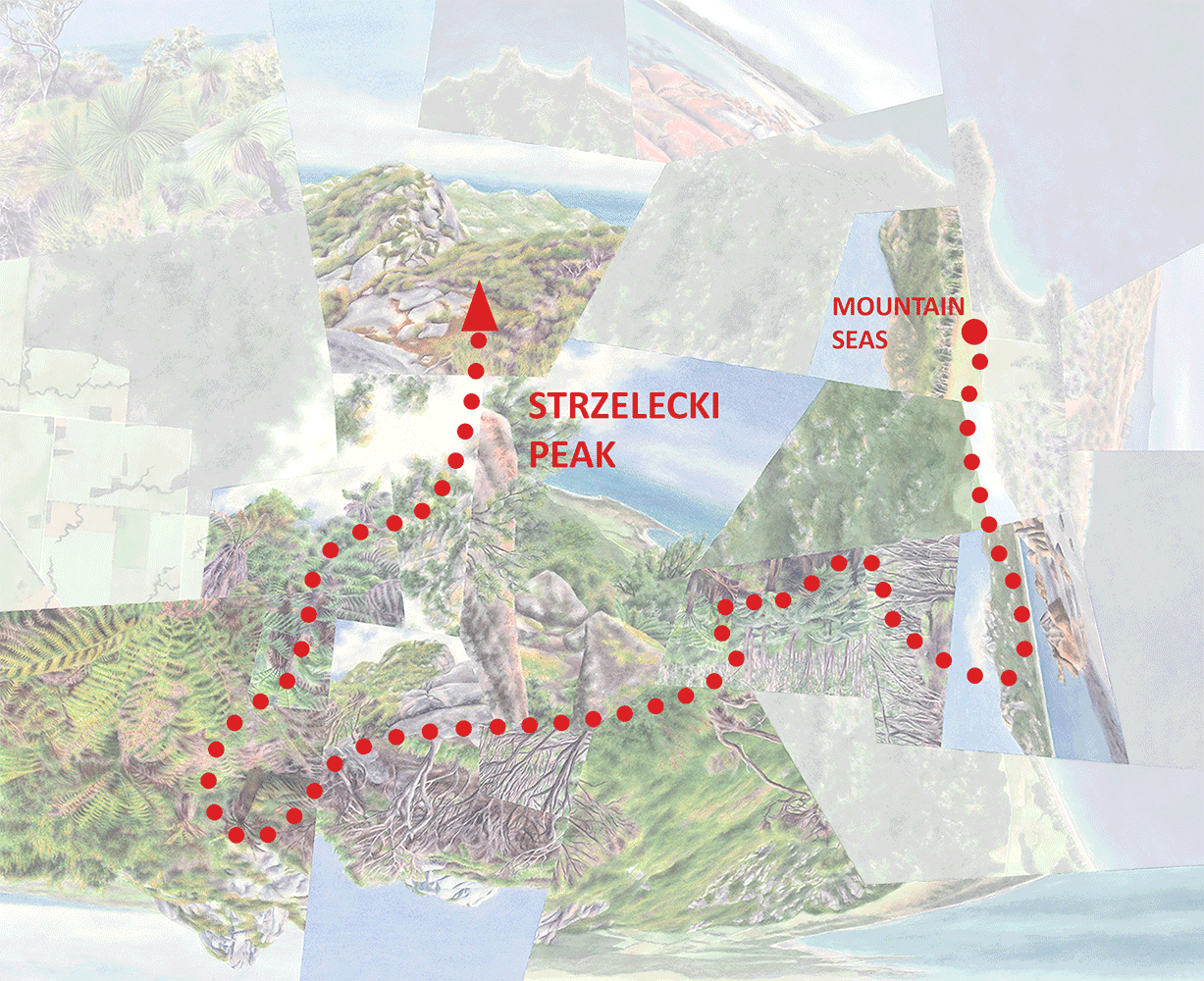Floreana Island, with the areas that I visited on this last trip in the arid and highland zones, connected by road and trail.
Floreana, another of the Galápagos’ four inhabited islands, is the second of three that I visited in 2018 (in addition to a quick cruise ship stop on a family trip back in 1994). Floreana is only about one-sixth the size of Santa Cruz (see my last post) but it still rises high enough to support what was once an extensive Scalesia forest, almost all of which has been replaced by agriculture. The lowlands are arid, as on all the islands.
View of the “town” of Puerto Velazco Ibarra and in the distance Cerro Pajas, the island’s highest point at 640m.
Giant Opuntia cacti at the tip of Punta Loberia, less than an hour’s walk south of the town (corresponding to #1 in the worldview below).
Columnar Jasminocereus cacti on Punta Loberia, looking back toward the main part of the island (Cerro Pajas is in the center).
Arid zone vegetation, including ghostly, usually leafless palo santo trees.
There are two sites in the highlands that are easily visited from the coastal village of Puerto Velazco Ibarra; each of my two Floreana-inspired worldviews incorporates one of them. The first is Cerro Alieri, a semi-circular hill (half of a volcanic cone) situated right on the edge of the highland zone and reaching 340m. It’s covered by a transitional forest that I wouldn’t call lush, but particularly around the summit it’s packed with colorful bromeliads both on the ground and above.
Beginning the walk up to Cerro Alieri from the main road.
Near the summit of the hill, looking back toward Cerro Pajas.
The trail runs a few minutes downill past the summit of Cerro Alieri through bromeliad-filled forest.
View from the end of the trail on the far side of the summit (corresponding to #10 below).
Floreana below depicts a journey between Punta Loberia, a peninsula on the west coast, and Cerro Alieri. Though I did do the roughly 3-hour walk between them (in pieces), the work focuses mostly on the two endpoints.
Floreana, watercolor on paper, 25”x21”.
The sequence of experiences along the “journey” between Punta Loberia and Cerro Alieri that inspired Floreana. The smaller arrows represent views off the main route of travel, near the summit. (#8 represents the summit itself, with views across the eroded crater toward Cerro Pajas, the island’s highest point.)
The second highland site is Asilo de la Paz, location of one of the archipelago’s earliest settlements and now home to a breeding center for giant tortoises (though Floreana’s native tortoise species has long been extinct). The forest here was disappointing in that the Scalesias were mixed with what I assume were non-native trees, given that on Santa Cruz and other islands that elevation is typically characterized by pure Scalesia forest where it’s left. The highlight of the area was in fact a labyrinth-like trail with granite walls, topped with bromeliads.
The granite labyrinth at Asilo de la Paz.
The Last Island, watercolor on aquabord, 20”x16”. (The title came from my aim to emphasize the conservation angle of the work for the 2019 SF Open Studios Exhibition.)
The green center of The Last Island, the second Floreana-based worldview, is inspired by this labyrinth and views from the vicinity. I’ve idealized the vegetation into lush, unbroken Scalesia forest, which even in areas that looked intact (visible from the road and in the distance on the slopes of Cerro Pajas) seemed for some reason less luxuriant than on Santa Cruz despite the comparable elevation.
The landscapes in the lower left are again based on Punta Loberia and vicinity. The views in the upper left are from Punta Cormorant on the island’s north coast, site of a flamingo-filled lagoon backed by an iconic triangular hill, which I visited on that family trip in 1994.
Darren




























